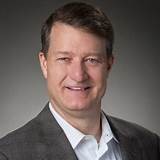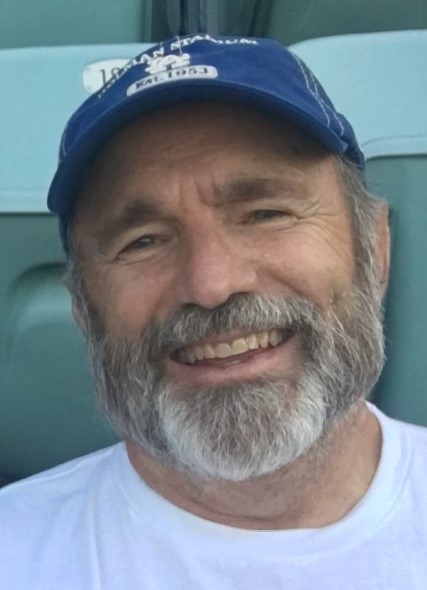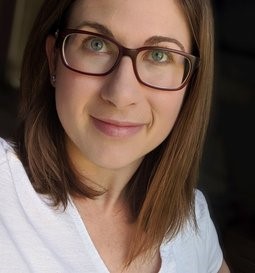



Presented by Satellite Educators Association
And Sponsored by

Satellites & Education Conference XXXIV Goes Virtual
July 24, 2021
Opening & Welcome
Remembering Mark McKay
See videos of
Keynote Speakers • Presenters • Exhibitors • Special Thanks
The 34th annual Satellites & Education Conference, was held July 24, 2021, entirely online at no cost to attendees. The conference was hosted on ZOOM by the Charter College of Education at California State University, Los Angeles. All prospective attendees were asked to register before attending. Attending teachers received professional development credit.
SEA President Monica Maynard opened the conference at 9:00 AM PDT, and a warm welcome was given by Dr. Cheryl Ney, Dean of the Charter College of Education at California State University, Los Angeles.
Watch video of Conference Opening by President Maynard and Welcome by Dean Ney (3:38)
SEA Secretary and Conference Coordinator Dr. Paula Arvedson gave a Tribute to Mark McKay. Mark first came to SEA as a M.Y. S.P.A.C.E. Teacher in 2010 with high school students from Stockton, California. He served as SEA President from 2012 until his death in August 2020 as he neared the completion of final edits on his doctoral dissertation in paleoclimatology at Texas A&M, Corpus Christi.
Watch the Tribute to Mark video (11:55)
The conference program PDF can be downloaded HERE.

Shawn Cochran is Associate Director of the Civil and Environmental Space in Customer Engagement and Solutions for Raythron Technologies.
The 2020 Atlantic hurricane season was the most active on record. There were 30 named storms. Twelve made landfall. It was the fifth above-normal season in a row, according to the National Oceanic and Atmospheric Administration, and the eighteenth in 26 years.
"We're seeing stronger events, we're seeing wetter events, and that's because there's more energy available to hurricanes to be able to intensify and become the monsters that they become," said Shawn Cochran, a scientist and senior business development manager at Raytheon Intelligence & Space, a Raytheon Technologies business.
For Mr. Cochran and his colleagues, the challenge is clear.
"We need to improve our ability to understand the atmosphere and the state of the atmosphere," he said. "And we need to reduce the timescale."
The key, he believes, is in the frequency of soundings - vertical measurements of temperature and humidity from Earth's surface to the top of the troposphere. Right now, those happen about once every six hours. The trouble, Cochran says, is that severe weather makes big changes much faster.
The presentation talked about what kind of satellites are used for weather and climate observations, and how they are used for weather prediction with a focus on tropical cyclones and hurricanes.
Watch Opening Keynote Address with Shawn Cochran (37:50)
Photo credit: Shawn Cochran

Benjamin Holt is a Research Scientist with the Ocean Circulation group within the Earth Science Section at the Jet Propulsion Laboratory, California Institute of Technology, Pasadena, CA, USA, which he joined in 1978. His research interests include using multi-sensor remote sensing data to examine the geophysical state of polar sea ice and snow, coastal oceanography and circulation, and the detection of marine pollution. In addition, he is also involved with new instrument development and techniques for microwave measurement of sea ice thickness.
In his talk, he explained that sea ice thickness is the single-most important measurement of the polar-covered seas, as thickness integrates the balance of energy fluxes between the atmosphere and underlying ocean. Yet sea ice thickness is one of the most challenging measurement on any meaningful spatial and temporal scale, including from space. Mr. Holt will provide an overview of the current state of the Arctic climate and a historical perspective of understanding thickness measurements from field campaigns through the current satellite record.
Watch this Keynote Address with Ben Holt (37:44)
Photo credit: NASA/JPL

Dr. Kerry Cawse-Nicholson is a member of the Carbon Cycle and Ecosystems group at the NASA Jet Propulsion Laboratory. She is an expert in spectroscopic imagery, particularly in fusing datasets acquired over different parts of the electromagnetic spectrum and in quantifying uncertainty. Kerry works as part of several product development and applications teams, as the Deputy Science Lead for ECOSTRESS - a thermal radiometer mounted on the International Space Station - and the co-lead for the Algorithms Working Group for an upcoming space-borne mission designated to study Surface Biology and Geology (SBG). Kerry produces hourly land surface temperature (LST) products over North and South America through a MEaSUREs project, produces evapotranspiration (ET) products over the continental US for ECOSTRESS, and serves as an invited working group member of the land processes distributed active archive center (LP DAAC) which distributes these products.
Watch the closing Keynote Address with Kerry Cawse-Nicholson (42:00)
Photo credit: Kerry Cawse-Nicholson
Seven great plenary sessions were offered during the one-day virtual conference. They are summarized here from the conference program with links for viewing presentation videos or downloading PowerPoint slides.
| Taking on Climate Change with Courage Kelley Le, Director of the UCI Science Project, California Co-Founder of RRISE UP (Radical Reimagination of Inclusion, Science, and Education) |
| Dr. Kelley Le will share about her new book to support teachers taking on climate change in meaningful and culturally relevant ways. Participants will engage in activities and reflection as they explore evidence-based pedagogical practices that support student learning. Resources will also be provided to extend learning beyond the session. Watch video of presentation (32:54) |
| CTE Mission: CubeSat Dominique Evans-Bye, Educator Matthew Keshishian, Student Clark Magnet High School, California |
| CTE Mission: CubeSat was developed by the Department of Education as a national challenge "to build technical skills for careers in space and beyond." The Honors GIS and Remote Sensing class at Clark Magnet High School in La Crescenta, CA, collaborated on a mission proposal as a first quarter project. Their proposal to build a CubeSat with an infrared sensor to identify homeless encampments within high fire risk areas was chosen as one of five national finalists, and they were awarded $5,000 to implement their mission. In this session, the student co-presenter will detail how the team built a CubeSat, programmed data collection with Arduino, determined site suitability for the project, then flew their mission using a weather balloon and analyzed the flight data using GIS all during distance learning. Watch video of presentation (25:30) |
| EarthKam: The Ultimate Selfie Ed Murashie, President ProEngineered Solutions, California |
| I am sure you have snapped a selfie from your phone, but have you ever snapped a selfie from the International Space Station? I will show you how plus other cool space related activities. Watch video of presentation (24:39) |
| Bottomless Wonders from Simple Rules Robert A. Black, Author Royal Fireworks Publishing Co., New York |
| Two of the most significant mathematical discoveries of the past 70 years - Fractal Geometry and Chaos Theory - have surprisingly simple roots. Both came in the early years of the Computer Age, when researchers were just beginning to use their new electronic tools, but those tools still had limited capabilities. Today, the key points of those breakthroughs can be re-created using standard computer software on a classroom computer, or even with a pencil and paper. |
| In this presentation, author Robert Black introduces you to the two men behind the discoveries, Benoit Mandelbrot and Edward Lorenz. Both are part of his Mathematical Lives biography series for teenage readers. Mandelbrot, who hid from the Nazis as a Jewish teenager in Vichy France, saw the same patterns in multiple disciplines, and discovered the mathematical key that described all of them. Lorenz was researching numerical weather prediction in 1960 when a computer glitch helped him discover a brand new field of science. Both men gave us ways to understand and model nature as it really exists, with building blocks that are accessible to middle school or high school students. |
| Benoit Mandelbrot: Reshaping the World was released in 2021, and Edward Lorenz and the Chaotic Butterflies will be released in 2022. Another volume in the series, David Blackwell and the Deadliest Duel, was named an Honor Book of 2020 by the Mathematical Sciences Research Institute. All are available from Royal Fireworks Press, http://www.rfwp.com. Watch video of presentation (33:42) |
| Mars Escape Room Monica Maynard, STEM Coordinator The Aerospace Corporation, California |
| Participants will engage in a team competition in which they collaborate to find and save the Tardigrade (water bear) and bring it back to Earth. Competitors will explore several regions of Mars and complete space related tasks designed to keep everyone learning while having fun. |
| In this video, find an explanation of a learning game for ZOOM or face-to-face classroom, experience a demonstration of the game on ZOOM, and hear reactions and further explanation via follow up Q&A. Watch video of presentation (20:13) Link to Mars Escape Room game Link to Mars Escape Room answer sheets |
| A3Sat: Engaging the Next Generation of Earth SySTEM Professionals John Moore, Executive Director Institute for Earth Observations at Palmyra Cove, New Jersey Max Friedman, Sriram Elango, Jack Woods, Students Burlington County Institute of Technology, New Jersey |
| CubeSats are playing an ever-increasing role in the Aerospace community from observing the Earth system to providing guidance for satellite missions to Mars and the Moon. These types of authentic experiences can no longer wait to be explored only at the college or university level, they must begin in the pre-college community. This project will result in broadening participation and creating diversity within these communities due to the interdisciplinary nature and requirements of such an Integrated Earth SySTEM project. |
| The A3Sat project will allow students to build an active model mirroring many aspects of an authentic CubeSat design engineers use for launch into space. A large number of sensors that will be onboard A3Sat come from an integrated board known as the Enviro+. The data from all these sensors are both recorded and time stamped in a log file as well as displayed as an overlay in both the visible and infrared camera views. |
| The data and/or imagery provide a wide range of innovative and transformative opportunities to gain experience, develop proficiencies, expand skills in data literacy, and explore career pathways, that are not readily available to the pre-college community, thus, broadening participation in STEM career pathways. Watch video of presentation (31:13) |
| Move an Asteroid, Shape the future Nahum Melamed, Project Leader Guidance and Control Subdivision, The Aerospace Corporation, California |
| The Aerospace Corporation conducts asteroid deflection teaming workshops using a web-based asteroid deflection app developed in collaboration with NASA/JPL intended for students, science teachers and the public. Historical asteroid impact events and the risk and consequences of a future impact with Earth are described. The asteroid deflection app is used to illustrate technology used for orbit change and deflection of a hypothetical asteroid away from Earth. Conducting a friendly asteroid deflection competition is explained and demonstrated. Educational resources based on the Next Generation Science Standards (NGSS) are available here: https://planetary-defense.aerospace.org/ Watch video of presentation (34:03) |
SEA's unique "exhibit hall" was virtual again this year. Each exhibit consisted of brief presentation between plenary sessions - sort of like advertising breaks during commercial radio or television broadcasts. Exhibitors shared something of who they were, the resources they had available for teachers and students, and their contact information. Each extends an invitation to connect. All hope you will find their resources helpful.
The Satellite Educators Association wishes to express its deepest gratitude to the many supporters of Satellites & Education Conference XXXIV without whom there would not be a conference. This year, special thanks go out to...

For more about this and other conferences and activities of the Satellite Educators Association, please visit https://SatEd.org.